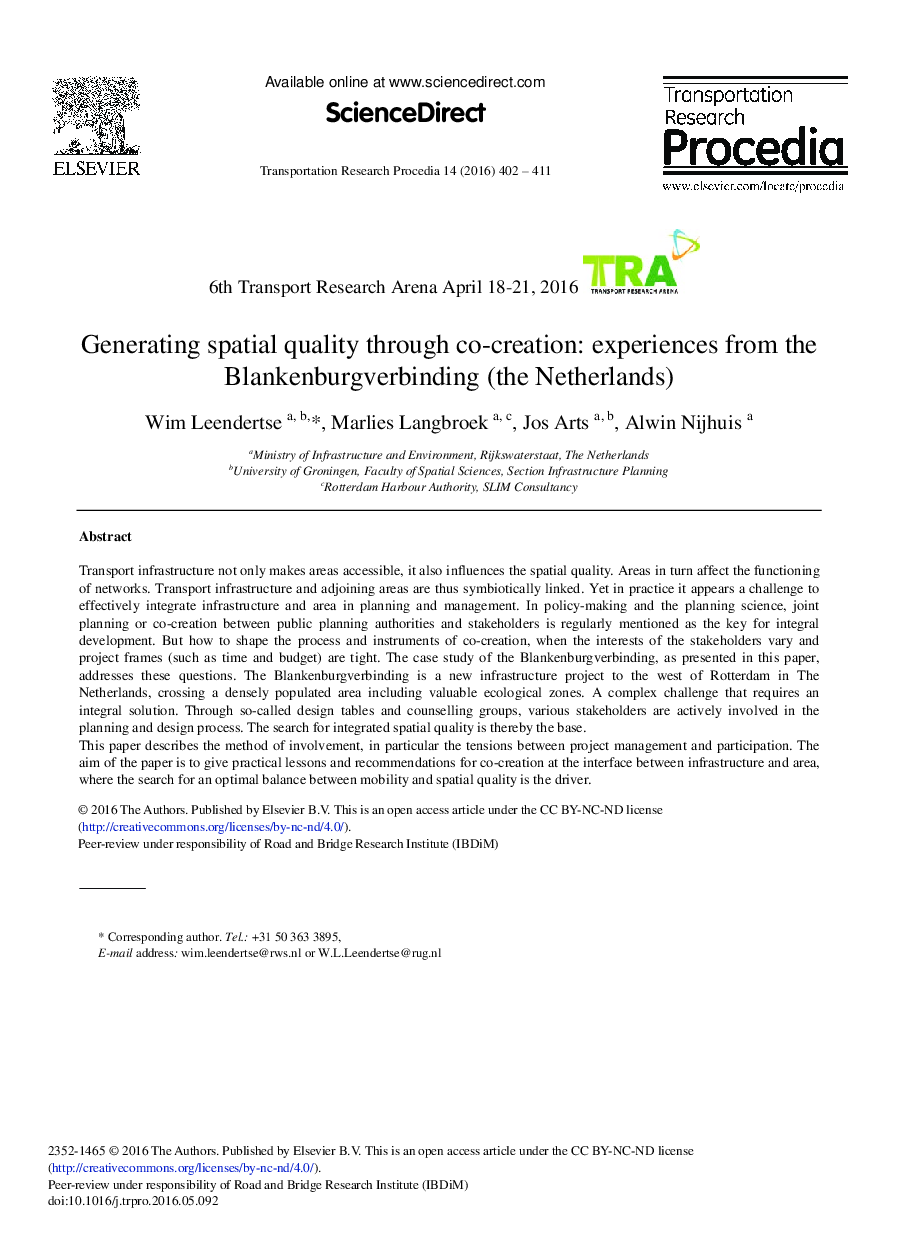| Article ID | Journal | Published Year | Pages | File Type |
|---|---|---|---|---|
| 1106225 | Transportation Research Procedia | 2016 | 10 Pages |
Transport infrastructure not only makes areas accessible, it also influences the spatial quality. Areas in turn affect the functioning of networks. Transport infrastructure and adjoining areas are thus symbiotically linked. Yet in practice it appears a challenge to effectively integrate infrastructure and area in planning and management. In policy-making and the planning science, joint planning or co-creation between public planning authorities and stakeholders is regularly mentioned as the key for integral development. But how to shape the process and instruments of co-creation, when the interests of the stakeholders vary and project frames (such as time and budget) are tight. The case study of the Blankenburgverbinding, as presented in this paper, addresses these questions. The Blankenburgverbinding is a new infrastructure project to the west of Rotterdam in The Netherlands, crossing a densely populated area including valuable ecological zones. A complex challenge that requires an integral solution. Through so-called design tables and counselling groups, various stakeholders are actively involved in the planning and design process. The search for integrated spatial quality is thereby the base.This paper describes the method of involvement, in particular the tensions between project management and participation. The aim of the paper is to give practical lessons and recommendations for co-creation at the interface between infrastructure and area, where the search for an optimal balance between mobility and spatial quality is the driver.
